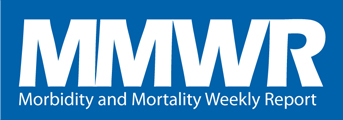MMWR News Synopsis for February 12, 2015
Silicosis Mortality Trends and New Exposures to Respirable Crystalline Silica — United States, 2001–2010
Because of the serious health and socioeconomic consequences of silicosis, new operations and tasks placing workers at risk for silicosis, and the continuous occurrence of silicosis deaths, efforts to limit workplace exposure to crystalline silica should be maintained. The long latency of silicosis warrants continuing surveillance. OSHA and CDC recommend best practices for protecting workers, including the use of engineering controls and respiratory protection. A significant decline in silicosis death rates was observed in the United Sates during 2001–2010. However, silicosis deaths still occurred among persons aged 15–44 years. Occupational exposures to silica dust have been known to occur in a variety of industrial operations like mining, sandblasting, road construction and rock drilling. New operations and tasks that have emerged during hydraulic fracturing of gas and oil wells and during fabrication and installation of engineered stone countertops also place workers at risk for silicosis. Silicosis is a preventable occupational lung disease caused by the inhalation of respirable crystalline silica dust. It can progress to respiratory failure and death. These findings underscore the importance of educating at-risk workers and their employers regarding the dangers of exposure to silica in the workplace.
Addressing Needs of Contacts of Ebola Patients During an Investigation of an Ebola Cluster in the United States — Dallas, Texas, 2014
Ebola preparedness should include partnering with local charitable foundations, community and faith-based organizations, businesses, and civic leaders in advance of a response to meet the basic needs of contacts of the Ebola patients, such as food, prescription refills, and educational supplies. This will facilitate successful contact tracing, which is critical to interrupting Ebola transmission. This report describes the needs of persons who were contacts of Ebola patients in Texas. Meeting the basic needs of contacts of the Ebola patients, such as food, prescription refills, and educational supplies, was essential to successful contact tracing efforts, which are critical to interrupting transmission. Engagement with a wide range of community partners, including businesses, schools, charitable foundations, community and faith-based organizations, and mental health resources would enhance public health emergency preparedness for Ebola. When this is done before the identification of an Ebola case, it can provide a useful basis for addressing the needs of persons identified as contacts of an Ebola patient, and facilitates successful contact tracing during an Ebola investigation.
Use of Group Quarantine in Ebola Control — Nigeria, 2014
Lagos state, Nigeria, had the resources to establish a group observation unit for the high-risk contacts of Ebola patients and to ensure that those quarantined were properly cared for. However, group quarantine of contacts in a central location might not be workable on a large scale. On July 20, 2014, the first known case of Ebola virus disease in Nigeria, in a traveler from Liberia, led to an outbreak. During this outbreak, most contacts underwent home monitoring, which included instructions to stay home or to avoid crowded areas if staying home was not possible. However, for five contacts with high-risk exposures, group quarantine in an observation unit was preferred because the five had crowded home environments or occupations that could have resulted in a large number of community exposures if they developed Ebola symptoms and became infectious. In August 2014, Nigerian public health authorities opened an observation unit in Lagos to quarantine the 5 individuals with high risk exposure.
Implementation of a Statewide Surveillance System for Neonatal Abstinence Syndrome — Tennessee, 2013
Nearly two-thirds of infants with neonatal abstinence syndrome (NAS) in Tennessee were born to mothers who used at least one opioid medication prescribed to them by a health care provider during pregnancy. Primary prevention of NAS includes prevention of opioid dependence/addiction to women of childbearing age and prevention of unintended pregnancy in this population. In 2013, Tennessee became the first state to establish a public health surveillance system for NAS. In its first year of operation, 921 affected infants were identified, of whom nearly two-thirds were born to mothers who used at least one opioid medication prescribed to them by a health care provider during pregnancy. Cases were more common among the Appalachian counties of eastern Tennessee. Availability of near real-time surveillance data for NAS gives Tennessee actionable data on which to allocate programmatic resources and develop sound public health policy aimed at primary prevention. Inclusion of information on maternal county of residence and source of exposure allows for targeted interventions that best address local needs.
Notes from the Field:
Silicosis in a Countertop Fabricator — Texas, 2014
Prevalence of Risk Factors for Suicide Among Veterinarians — United States, 2014
###

